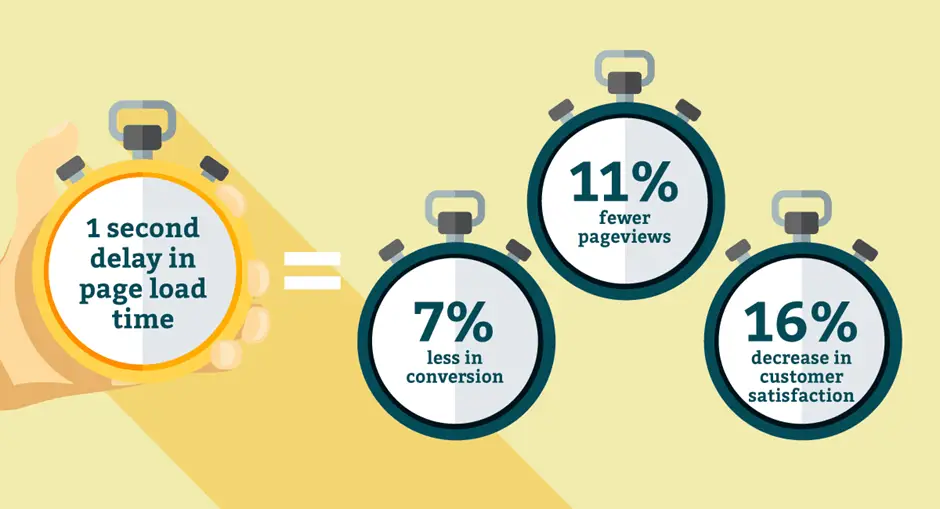Guide to a Faster E-Store: Proven Practices for Faster Magento Stores
When it comes to running a successful e-commerce business, having a fast and responsive online store is crucial. Customers today expect instant page load times and seamless browsing experiences. The main motive of any eCommerce business is to render excellent customer experience to lead to successful conversion and even revisiting customers. A one-second delay in page loading makes page views drop by 11% greatly impacting the shopping experience. I am sure that none of us want this for our business. It’s a common problem for many Magento 2 store holders as their E-store is loading slowly. If you are facing the same issue then worry not! You are not alone, here are a few tips that will explore some effective strategies to optimize the performance of your Magento e-store, ensuring lightning-fast speed and enhanced user experience.

But first let us understand WHY your store is loading slowly and look into the underlying reasons for your slow Adobe commerce store. The Magento 2 speed is not slow by default, hence the fact that your store is not as fast as it used to be can be due to the following reasons:
1. Insufficient Hosting Resources
Low RAM, limited processing power, or low disk space indicates inadequate server resources that can result in slow website performance
2. Unoptimized Code and Database
Poorly optimized code or a bloated database can significantly slow down your Magento 2 store. Inefficient database queries, lack of proper indexing, or excessive customizations can all contribute to slow performance
3. Lack of Caching
Magento 2 has this amazing feature wherein it provides a powerful caching mechanism. If caching is not configured every request to your store will be resulting in time-consuming processing and database queries.
4. Unoptimized Images
Image file size can greatly impact the loading time of the page. If images are not properly optimized, they can consume excessive bandwidth and increase loading times.
5. Third-Party Extensions and Themes
Extensions and themes can slow down your E-store if it is resource heavy or poorly coded.
6. Poor Server Configuration
Inadequate server configurations, such as incorrect PHP settings or outdated software versions, can impact the performance of your Magento 2 store.Now that we are aware of the various elements that could be causing problems for our store we can move to the step where we can diagnose our Magento store speed and evaluate how serious the problem is. Make sure that your team is performing the speed tests on a regular basis. Some tools that are reliable for the measurement of your website are:
- Google PageSpeed Insights
- WebPageTest
- GTmetrix
- Sematext
- Pingdom Speed Test
Now that we have tested our page and know that the problem exists, let’s move towards fixing the issues. Here are 5 best ways you can speed up your Magento website:
1. Optimize Your Hosting Environment
Select a reputable hosting company that specialises in Magento hosting. Look for a service provider that provides high-performance servers, SSD storage, and a stable infrastructure. Consider using a content delivery network (CDN) to distribute your website’s content across multiple servers around the world, which will reduce latency and improve load times.
2. Regularly update Magento
When Magento releases a new version, you should update the Magento version on your site. New releases frequently include patches and performance improvements. Make sure you’re using the most recent Magento version.
3. Enable Varnish Cache for Magento caching
Varnish Cache allows it to reduce response time and network bandwidth consumption for future equivalent requests. You can go to Admin PaneL > Store > configuration > Advanced > System > Full Page Cache > Caching Application > Varnish Caching. It is an open source web application accelerator and helps in improving the speed of your page.
- Utilize a Content Delivery Network (CDN)
- Sign up and Configure CDN
- Configure DNS
- Enable CDN in Magento 2
- Test CDN Integration
- Configure CDN Cache-Control
- Monitor and Fine-tune CDN Performance
4. Minify and Combine JavaScript and CSS
Minifying and combining your JavaScript and CSS files reduces the number of HTTP requests made by the browser, resulting in faster page loads. Magento has built-in tools for merging and minifying JavaScript and CSS files. Take advantage of these features to optimize your site’s performance.
Admin panel > Stores > Configuration > Advanced.
Once you reach Advanced tab, click Developer
In JavaScript settings, change the values of the following 3 fields to Yes.
- Merge JavaScript Files
- Enable JavaScript Bundling
- Minify JavaScript Files
In the CSS Settings tab, change the fields Merge CSS Files and Minify CSS Files to Yes
5. Clean Magento Logs And Database
Magento 2 keeps data logs for up to 180 days. This can make your database sluggish and heavy. You should change the settings to the lowest possible value, 14 days, and click on “Save Config.”
Speeding up your E-Store is not as difficult as it seems. Fast working E-store is important for boosting your sales and having a growing revenue. If you still cannot find a way out then you can contact your service provider for a faster online store. Tychons has helped various companies grow and boost their sales by providing extraordinary services in improving the overall store performance by analysing and optimizing the E-stores with our in-house Magento experts.


